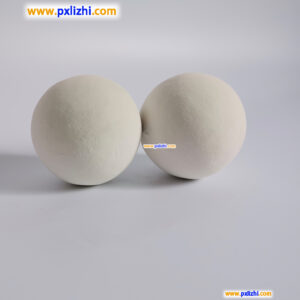
# Inert Ceramic Ball Applications in Industrial Processes
## Introduction to Inert Ceramic Balls
Inert ceramic balls are widely used in various industrial processes due to their excellent chemical stability, high temperature resistance, and mechanical strength. These small spherical ceramic pieces play a crucial role in many chemical and petrochemical applications, serving as catalyst supports, tower packing materials, and bed support media.
## Key Properties of Inert Ceramic Balls
The effectiveness of inert ceramic balls in industrial applications stems from their unique properties:
– High temperature resistance (up to 1600°C)
– Excellent chemical inertness
– Superior mechanical strength
– Low water absorption
– Good thermal shock resistance
– Uniform size and shape
## Major Industrial Applications
### 1. Catalyst Support in Chemical Reactors
Inert ceramic balls are commonly used as catalyst supports in fixed-bed reactors. They provide a stable foundation for active catalysts while ensuring proper gas or liquid distribution throughout the reactor bed. Their thermal stability makes them ideal for high-temperature catalytic processes.
### 2. Packing Material in Distillation Columns
In distillation and absorption towers, inert ceramic balls serve as efficient packing materials. They create a large surface area for mass transfer between liquid and vapor phases while maintaining low pressure drops across the column.
Keyword: inert ceramic ball
### 3. Bed Support in Filtration Systems
These ceramic balls are frequently used as support media in filtration systems, particularly in water treatment plants and chemical processing facilities. They prevent the loss of finer filtration media while allowing for proper fluid distribution.
### 4. Thermal Insulation in High-Temperature Processes
Due to their excellent thermal properties, inert ceramic balls are employed as insulation materials in high-temperature industrial furnaces and kilns. They help maintain uniform temperature distribution and reduce heat loss.
## Advantages Over Alternative Materials
Compared to metal or plastic alternatives, inert ceramic balls offer several distinct advantages:
– Longer service life in corrosive environments
– Better performance at extreme temperatures
– Lower maintenance requirements
– More cost-effective in long-term operations
– Environmentally friendly and non-toxic
## Selection Considerations
When choosing inert ceramic balls for industrial applications, several factors should be considered:
– Operating temperature range
– Chemical compatibility with process media
– Required mechanical strength
– Size and shape specifications
– Pressure drop requirements
– Cost-effectiveness for the specific application
## Future Trends in Inert Ceramic Ball Technology
The development of advanced ceramic materials continues to expand the applications of inert ceramic balls. Emerging trends include:
– Development of ultra-high purity ceramics for semiconductor applications
– Nano-structured ceramic balls for enhanced performance
– Custom-shaped ceramic balls for specialized applications
– Improved manufacturing processes for better consistency and lower costs
## Conclusion
Inert ceramic balls have become indispensable components in numerous industrial processes, offering reliable performance in demanding environments. As industrial processes become more sophisticated and demanding, the role of these versatile ceramic components is likely to expand further, driving continued innovation in ceramic material science and manufacturing technologies.